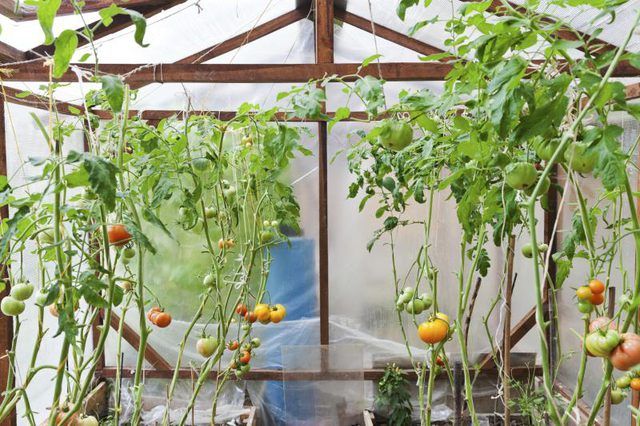Bulbs
Flower Basics
Flower Beds & Specialty Gardens
Flower Garden
Garden Furniture
Garden Gnomes
Garden Seeds
Garden Sheds
Garden Statues
Garden Tools & Supplies
Gardening Basics
Green & Organic
Groundcovers & Vines
Growing Annuals
Growing Basil
Growing Beans
Growing Berries
Growing Blueberries
Growing Cactus
Growing Corn
Growing Cotton
Growing Edibles
Growing Flowers
Growing Garlic
Growing Grapes
Growing Grass
Growing Herbs
Growing Jasmine
Growing Mint
Growing Mushrooms
Orchids
Growing Peanuts
Growing Perennials
Growing Plants
Growing Rosemary
Growing Roses
Growing Strawberries
Growing Sunflowers
Growing Thyme
Growing Tomatoes
Growing Tulips
Growing Vegetables
Herb Basics
Herb Garden
Indoor Growing
Landscaping Basics
Landscaping Patios
Landscaping Plants
Landscaping Shrubs
Landscaping Trees
Landscaping Walks & Pathways
Lawn Basics
Lawn Maintenance
Lawn Mowers
Lawn Ornaments
Lawn Planting
Lawn Tools
Outdoor Growing
Overall Landscape Planning
Pests, Weeds & Problems
Plant Basics
Rock Garden
Rose Garden
Shrubs
Soil
Specialty Gardens
Trees
Vegetable Garden
Yard Maintenance
How to Grow Tomatoes in a Hothouse
How to Grow Tomatoes in a Hothouse. Tomatoes (Solanum lycopersicum) are tender perennials in U.S. Department of Agriculture plant hardiness zone 10 and warmer but are usually grown as annuals in the continental United States. Tomatoes do not tolerate prolonged temperatures below 55 degrees Fahrenheit and will die if exposed to freezing...

Tomatoes (Solanum lycopersicum) are tender perennials in U.S. Department of Agriculture plant hardiness zone 10 and warmer but are usually grown as annuals in the continental United States. Tomatoes do not tolerate prolonged temperatures below 55 degrees Fahrenheit and will die if exposed to freezing temperatures. They may drop blossoms and will not set fruit if overnight temperatures drop below 55 degrees Fahrenheit. In USDA zones 4 and colder, it may be more practical to grow tomatoes in a hothouse than outside, where you would have to cover them every time the weather cools.
Hothouse Growing
A hothouse or greenhouse is a clear structure for growing plants. While some people interchange these terms, a greenhouse is not always heated, while a hothouse is heated during colder months. The glazing can be glass, fiberglass or double-walled polycarbonate or flexible plastic. The heating system may be powered by electricity, gas, oil or wood; installation of electricity will accommodate powered ventilation systems as well.
When growing tomatoes in a hothouse, you control the growing environment and must supply all the water, drainage, soil nutrients and ventilation. Provide cross-ventilation by opening a screened door and a window on the opposite side. Automated vents will help prevent the hothouse from overheating. Start with a nutrient-rich soil mix and amend the soil every growing season by adding compost, sphagnum peat, fish emulsion or 2 to 3 pounds of a 5-10-5 fertilizer per 100 square feet of garden area. Tomatoes require 40 percent to 70 percent relative humidity. Space plants 24 to 36 inches apart to ensure enough ventilation and light between them. You can reduce humidity by increasing ventilation and avoiding excess watering. If you need to increase humidity, you can spray water on the floor or other hard surfaces inside the hothouse.
You may plant tomatoes directly into the soil in the hothouse, or into raised beds or containers. Either way, you must amend the soil at least every year and ensure adequate drainage. Soil dries out more quickly in containers, especially under high temperatures. One advantage of container growing is that you can easily remove diseased plants or move them to a different location.
Tomato Growing Requirements
As tomatoes grow best in full sun, they grow well in hothouses. Tomatoes require well-drained, fertile soil with a pH of 6.2 to 6.8. When planting seedlings, apply a liquid fertilizer recommended for fruits and vegetables or a water-soluble granular 5-10-5 fertilizer at a rate of 2 tablespoons per plant. Follow manufacturer’s directions. Water well. Reapply fertilizer every two to four weeks as the plants set fruit, using ? cup per plant of 5-10-5 fertilizer or according to manufacturer’s directions for a liquid fertilizer.
Water deeply at the soil level, allowing the top 1 to 2 inches of the soil surface to dry between watering. The hothouse may create a more humid environment, but the warmer temperatures may dry the soil more quickly, so check for moisture a few inches below the soil surface. Inconsistent watering, such as allowing the plants to dry out and then overwatering, can cause the tomatoes to crack.
Temperature Considerations
Ideal daytime temperature for tomatoes is between 70 and 85 degrees Fahrenheit. While tomatoes can tolerate higher or lower temperatures for short periods of time, prolonged temperatures above 85 degrees will make the pollen nonviable, and the blossom will drop without setting fruit. Tomatoes may also drop blossoms if the temperature reaches 104 degrees Fahrenheit for just four hours. Temperatures inside a hothouse can easily exceed 20 or 30 degrees above the outside temperature, so be sure to monitor the day and night hothouse temperature, especially as the plants are blossoming and setting fruit.
Pollination and Support
Tomato flowers are botanically perfect, meaning that one flower contains both male and female parts. Tomatoes self-pollinate as the flower opens and are also pollinated by wind and insects. To ensure sufficient pollination, gently shake the flower clusters a few times a week or introduce bees into your hothouse. As plants grow, support them with cages or staking.